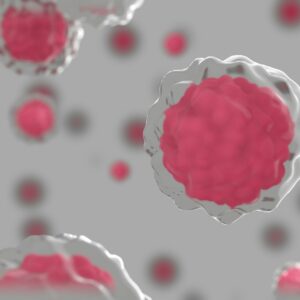Ozone therapy has brought a modern twist to wellness practices by unlocking the potential of ozone, a triatomic molecule of three oxygen atoms. The therapeutic use of ozone has an air of optimism in many medical circles—its promise is backed by the notion that it can modulate the immune response and enhance the body’s oxygenation process.
Integrating ozone therapy into patient care protocols involves a technique known as IV ozone therapy. This practice administers ozone directly into the blood, hoping to harness its health benefits.
Historical Milestones in Ozone Therapy
Ozone therapy, dating back to the 19th century, initially harnessed ozone’s antiseptic capabilities. Surgeons found it valuable for sterilizing instruments and disinfecting wounds—its efficacy gained renown during the grueling period of World War I when ozone showed promise in wound care and the prevention of infections.
While its medical use waned with pharmaceutical antibiotics, a resurgence in alternative and complementary medicine has rekindled interest in ozone’s potential. Citing scholarly articles, the modern approach to ozone therapy explores its antibacterial properties and possible immunomodulatory effects, posing new questions about its role in current therapeutic practices.
Contemporary Use in Various Health Conditions
Today, the application of ozone therapy spans an array of health conditions, including, but not limited to, chronic wounds, inflammatory disorders, and various infections. Promising research suggests ozone may have benefits as an adjunct in oncology treatments.
It is believed that ozone’s interference with diseased cellular processes while bolstering the body’s antioxidant response could be behind its suggested therapeutic range, which has compelled the medical community to further investigate and apply this therapy in holistic care regimes.
Ozone Therapy’s Mechanism of Action
Ozone therapy, through its unique properties, is posited to induce controlled oxidative stress within the body. This stress could strengthen the body’s biochemical pathways that govern healing and defense against disease.
The induction of mild oxidative stress and subsequent activation of the body’s antioxidation mechanisms illustrates ozone’s sophisticated interaction with the human body. This intricate dance of ozone with our internal processes has caught the intrigue of many researchers. It is the subject of ongoing scientific scrutiny to capture the essence of its therapeutic benefits.
Administering IV Ozone Therapy
The direct infusion of ozone into the bloodstream is a complex medical procedure that requires careful control and extensive medical expertise. It’s essential to obtain the patient’s informed consent and ensure that they fully understand the treatment process.
Administering ozone therapy requires specialized equipment and highly trained professionals to ensure the purity and accuracy of the ozone dosage. This highlights the importance of choosing a reputable and professional facility for the procedure.
Additionally, due to the complexities involved in ozone therapy, the expertise and experience of the healthcare provider administering the treatment are crucial in determining the therapy’s effectiveness and safety.
Therefore, patients considering ozone therapy should conduct thorough research and seek treatment from certified healthcare professionals with the required knowledge and skillset to deliver the treatment safely and effectively.
Real-Life Benefits: Patient Experiences
The tapestry of patient narratives and testimonials offers a diverse collection of personal accounts claiming various levels of improvement after undergoing ozone therapy. Some patients report reductions in pain, while others cite increased vitality and well-being.
It must be noted that such personal accounts should complement rather than replace scientific evidence when contemplating ozone therapy, and consultations with healthcare professionals should always form the basis of any decision to pursue such treatments.
Safety Measures and Possible Risks
Assessing any medical intervention’s safety profile is of the utmost importance. When administered correctly, ozone therapy exhibits a commendable safety record, with most side effects being transient and minor, such as mild discomfort at injection points or temporary headaches.
Serious complications are rare but underline the necessity of professional oversight in the treatment’s application. Ensuring patients are well-informed about potential risks and mitigatory strategies continues to be a central tenet in pursuing broader acceptance and application of ozone therapy.
Ozone Therapy’s Future in Scientific Research
The scientific exploration of ozone therapy offers a promising outlook. New research aims to illuminate how ozone therapy may work at a molecular level and which specific diseases could be most amenable to its application.
With a scholarly push to integrate ozone therapy within broader treatment modalities, the future portends a potential shift in the paradigms of patient-specific healthcare, tailoring therapies to the individual’s unique conditions and needs.
Finding and Choosing Ozone Treatment Options
Exploring ozone therapy involves accessing factual and practical information about treatment providers. Prospective patients must ensure they engage with reputable clinics that adhere strictly to safety protocols.
Additionally, understanding the therapy’s accessibility, cost, and coverage considerations is necessary for making an informed decision, bearing in mind that the standing of ozone therapy within the compensation frameworks of health insurance providers may vary.
It’s essential for individuals considering ozone therapy to conduct thorough research, seek recommendations, and ask pertinent questions to ensure they receive safe and effective treatment from qualified professionals. By taking these steps, patients can confidently navigate the decision-making process and make choices that align with their health and wellness goals.
Ozone’s Integration into Holistic Well-being
Positioning ozone therapy within the broader framework of holistic and whole-body health highlights its potential as a standalone treatment and a complementary component of a comprehensive approach to health and wellness.
As this therapy garners more attention and recognition within the healthcare landscape, it is increasingly perceived as an integral part of an integrative approach to bolster the body’s innate balance and healing mechanisms. This perspective underscores the convergence of traditional and contemporary perspectives on well-being, demonstrating how integrating various modalities can synergistically enhance patient outcomes.
By embracing ozone therapy as part of a holistic approach to healthcare, practitioners, and patients can harness its therapeutic benefits while leveraging the strengths of other complementary therapies to optimize overall wellness.





